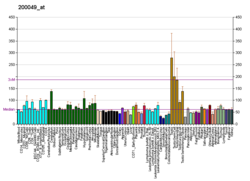Histone acetyltransferase KAT7 is an enzyme that in humans is encoded by the KAT7 gene. [5] [6] [7] It specifically acetylates H4 histones at the lysine12 residue (H4K12) [8] and is necessary for origin licensing and DNA replication. [9] [10] KAT7 associates with origins of replication during G1 phase of the cell cycle through complexing with CDT1. [11] Geminin is thought to inhibit the acetyltransferase activity of KAT7 when KAT7 and CDT1 are complexed together. [12]




